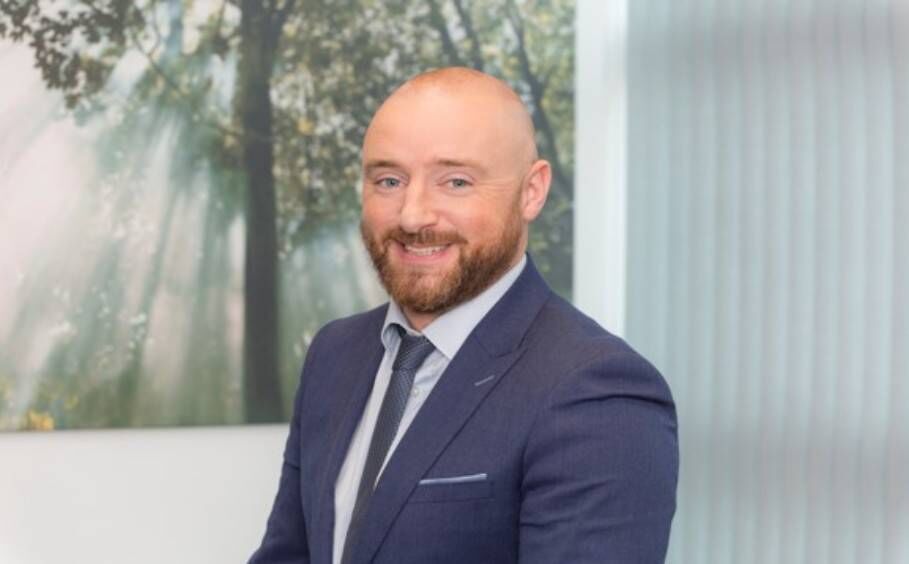Holistic financial planning: Living your best life now and into retirement

Holistic financial planning adopts a broad, big-picture approach; one that integrates budgeting, saving, investing and debt management, with personal values, goals and lifestyle.
If you had a choice, would you prefer to see the big picture or not? Let’s assume that you would. And that doing so would not require a visit to a high street optician for a new pair of spectacles.
Failure to see the big picture is a frequent factor in financial mistake-making. This tendency to see investments without considering the context of the overall portfolio is what Shlomo Benartzi and other behavioural economists refer to as ‘narrow framing’.
In this context, the framing reference has, of course, nothing whatsoever to do with spectacles. Nor has it anything to do with the silhouette of choice carved by millions of skinny jabbers worldwide. What it is, is what we don’t want to be doing investment-wise, ‘big picture’ being the better approach by far.

Holistic financial planning adopts a broad, big-picture approach; one that integrates budgeting, saving, investing and debt management, with personal values, goals and lifestyle.
In his paper, ‘The Value of Realistic Financial Advice,’ which was published in the academic journal, Financial Planning Review, earlier this year. Benartzi contends that when holistic advice reflects the wide range of financial decisions a typical American household faces, it can, when evaluated, be worth $4,384 per year, or 7.5% of annual income.
Also, the value of advice is potentially up to ten times larger for underserved groups such as low-income households.
The positive impacts of holistic financial planning can be life-changing. With this in mind, we asked Ciarán Hughes, a certified financial planner and co-founder of sustainable investment company Ethico, to share some insights into big picture financial planning and how, with expert advice, it can help you enjoy a good life now and into retirement.
Holistic financial planning is about looking at the full picture of your life and money, not just pensions or investments in isolation.
It is about living your best life now and having the financial freedom to do so in the future. Some people save too little and struggle later; others save too much and sacrifice their lifestyle now, only to end up with more money than they’ll ever use.
The real value lies in finding the right balance, and that is where a certified financial planner can help. While wealth maximisation and tax efficiency are important, most people care much more about family, lifestyle, wellbeing, and experiences.
What they need is the financial freedom to enjoy what matters. At its core, holistic financial planning provides the confidence to plan for and enjoy the best possible life, both now and in retirement.
Effective retirement planning is like winning the Lotto in slow motion. If you won the Lotto today, you would likely stop working and live the life you want to live. Effective retirement planning can deliver the same outcome - minus a few Ferraris.
Also, while winning the lottery is a pipe dream, everyone can maximise their financial future regardless of their income or savings.
The number one question most people ask is 'When can I afford to retire?'
In simple terms, people need to figure out how much they make after tax while working and compare that to their net income if/when they stop working.
Next, factor in how much you need to live and spend to live your best life and do the sums to see if it all adds up. With effective planning, you might be pleasantly surprised by the outcome.
In retirement, you will pay proportionately less tax on lower incomes. By keeping expenses realistic, you may be able to stop working sooner than imagined.
You reach a milestone when you can, by choice, stop working or move to part-time, knowing you don’t have to stay on the hamster wheel indefinitely.
For most, retirement becomes a more realistic option once the kids are grown, the mortgage is paid off, and all major obligations have been met. For clarity and options, a decent CFP can model different “what if” scenarios.
Think of retirement incomes as LEGO blocks. One piece in isolation may not be enough, but when you cleverly stack them, one on top of each other, you can start to build a house, as the bigger picture comes into view.
For most people, state pensions are the foundation block. While they only become payable at a certain age, and they don’t provide enough income on their own, they do form a core part of any holistic financial plan. To maximise your benefits, it’s important to keep your PRSI record up to date.
As for your current pension, with additional contributions, you will likely have scope to improve this in the years before retirement. Don’t assume it’s your only pension, without first scanning back through your career to see if you have pensions from previous roles at home or abroad.
As every LEGO block counts, all passive incomes in retirement should be considered. Non-pension investments and rental and other semi-passive incomes all have a part to play. Don't leave anything off the table.
In the earlier years of retirement, while you are waiting for the state pension to kick in, part-time work can be useful for back-filling potholes. The logic here is to look at your options and see what’s possible when you add up all of your LEGO blocks.
Holistic planning is about maximising each block into a structure that supports the lifestyle you want. To effectively draw them down, an awareness of the rules and a knowledge of how each impacts the others will be required. Also, a tax-efficient strategy. With those, you are less likely to make the mistakes that so many commonly make.
A broad strategy often adopted by those in their 30s, 40s, and 50s is to prioritise maximising their pensions.
At 40% relief for higher-rate taxpayers, tax relief on contributions is very attractive. Essentially, for every €1,000 you contribute, it only costs €600 out of your pocket.
Lesser known, but just as beneficial, is the tax-free growth on investments as pension pots increase. As there is no income tax or CGT on pension growth, unencumbered compound growth can be hugely beneficial.
Lastly, a tax-advantageous drawdown in retirement means that most people get far more from pensions than they put in.
No other savings vehicle in Ireland supercharges long-term savings as pensions do. What’s important is to remember that this is a marathon, not a sprint.
Next: Clear debt and mortgages. Once pensions are on track, focus on reducing debts. Some people prefer to invest instead, but being debt-free brings huge mental and financial freedom. As long as you don’t need access to those overpaid funds within the timeframe, paying down debt is the right choice for most people.
Lastly: Invest in non-pension investments. Traditionally, money sitting in banks on deposit has not kept pace with inflation. Most deposit accounts in Ireland pay very little, if any interest at all. We’ve had significant inflation over the last 4-5 years, and it has hurt the real value of savings for Irish savers. €100 under the mattress from 5 years ago will only buy €80 worth of stuff today. That’s a real loss.
For sure, volatility and risk, charges, interest rates and fund selection all play a part, and there are many layers to the outline above, but a CFP would include all of these aspects as part of the broader plan.
What advice do you have for people close to retirement?
As you approach retirement, the challenge changes, and the devil is in the details. Coordination is key. It’s no longer just about growth, but about how the blocks fit together as you draw them down. Revenue rules matter.
Ireland has strict rules on how pension benefits can be accessed, how choices in one scheme affect others, and the options for post-retirement planning (lump sums, ARFs, annuities).
Bespoke planning is crucial as these decisions are highly individual, depending on your financial situation, lifestyle goals and risk attitude. The wrong move could cost thousands in tax or reduce flexibility later.
The right one can unlock freedom for you and your family. At retirement, it’s not just about how much you’ve built, it’s about how you unlock it, coordinate it, and make it last.
Use the Brokers Ireland or the FPSB websites to search for Certified Financial Planners and advisors in your area. Chat to a few and get a feel for them. Work with someone who is well reviewed and has all of the certifications, regulations, professional qualifications and memberships.
Be aware that pension administrators and larger corporate providers usually just present ‘options’ for their product, not full advice across all your LEGO blocks. A holistic planner looks at everything together, builds a bespoke strategy, and helps you make confident decisions.
With the right advice, you can live your best life now, while knowing you’ll have the financial freedom to enjoy a comfortable retirement later on.








